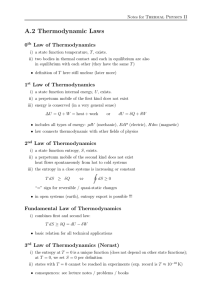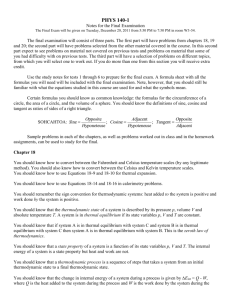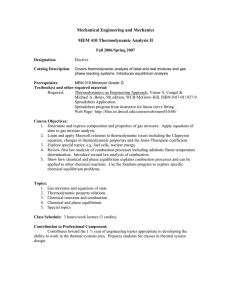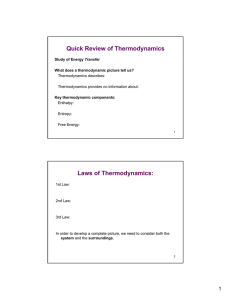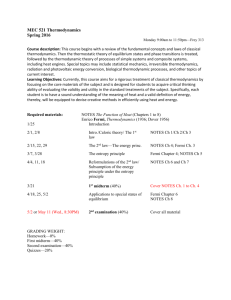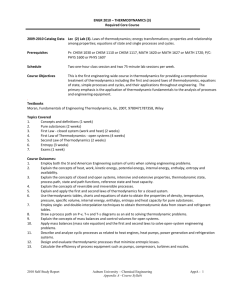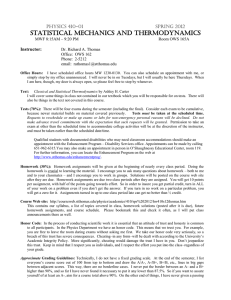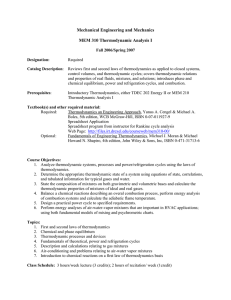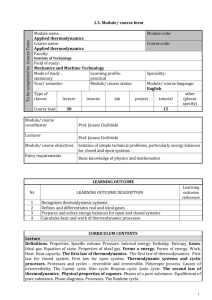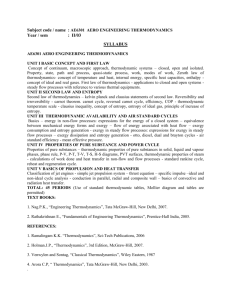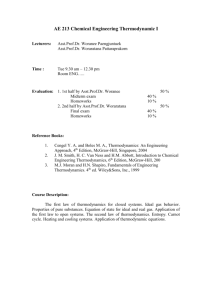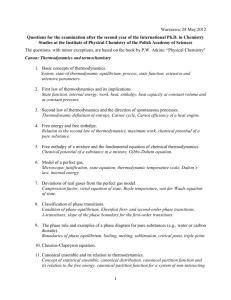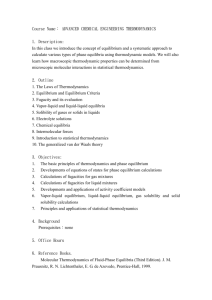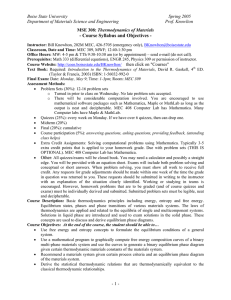INTRODUCTION TO THERMODYNAMICS
advertisement
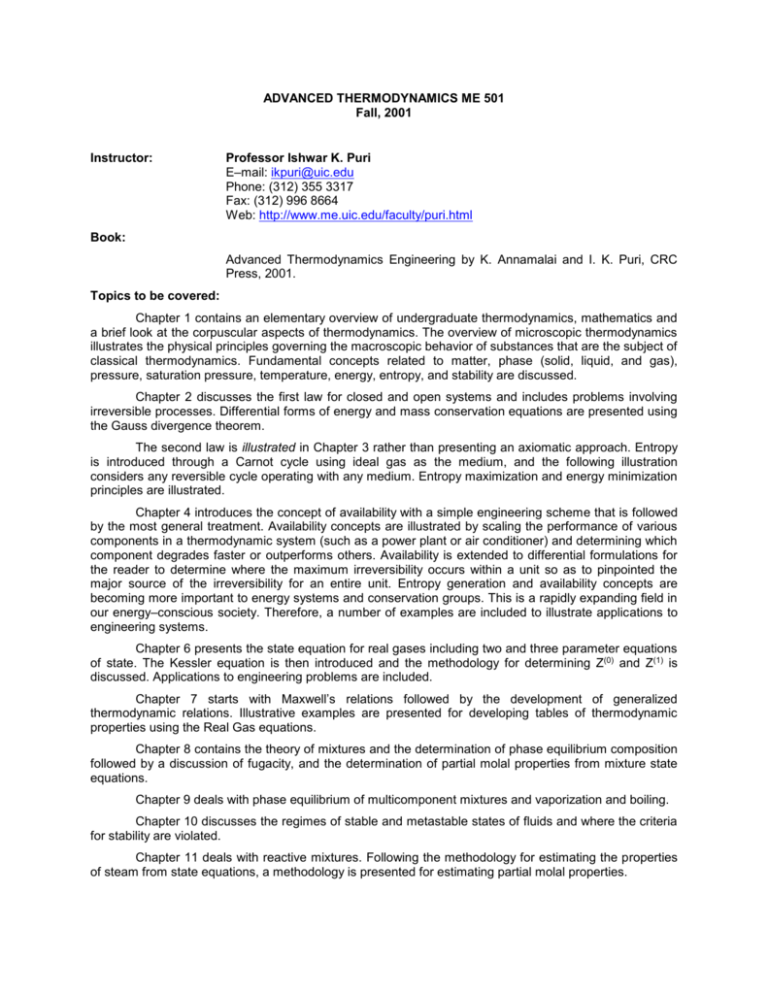
ADVANCED THERMODYNAMICS ME 501 Fall, 2001 Instructor: Professor Ishwar K. Puri E–mail: ikpuri@uic.edu Phone: (312) 355 3317 Fax: (312) 996 8664 Web: http://www.me.uic.edu/faculty/puri.html Book: Advanced Thermodynamics Engineering by K. Annamalai and I. K. Puri, CRC Press, 2001. Topics to be covered: Chapter 1 contains an elementary overview of undergraduate thermodynamics, mathematics and a brief look at the corpuscular aspects of thermodynamics. The overview of microscopic thermodynamics illustrates the physical principles governing the macroscopic behavior of substances that are the subject of classical thermodynamics. Fundamental concepts related to matter, phase (solid, liquid, and gas), pressure, saturation pressure, temperature, energy, entropy, and stability are discussed. Chapter 2 discusses the first law for closed and open systems and includes problems involving irreversible processes. Differential forms of energy and mass conservation equations are presented using the Gauss divergence theorem. The second law is illustrated in Chapter 3 rather than presenting an axiomatic approach. Entropy is introduced through a Carnot cycle using ideal gas as the medium, and the following illustration considers any reversible cycle operating with any medium. Entropy maximization and energy minimization principles are illustrated. Chapter 4 introduces the concept of availability with a simple engineering scheme that is followed by the most general treatment. Availability concepts are illustrated by scaling the performance of various components in a thermodynamic system (such as a power plant or air conditioner) and determining which component degrades faster or outperforms others. Availability is extended to differential formulations for the reader to determine where the maximum irreversibility occurs within a unit so as to pinpointed the major source of the irreversibility for an entire unit. Entropy generation and availability concepts are becoming more important to energy systems and conservation groups. This is a rapidly expanding field in our energy–conscious society. Therefore, a number of examples are included to illustrate applications to engineering systems. Chapter 6 presents the state equation for real gases including two and three parameter equations of state. The Kessler equation is then introduced and the methodology for determining Z(0) and Z(1) is discussed. Applications to engineering problems are included. Chapter 7 starts with Maxwell’s relations followed by the development of generalized thermodynamic relations. Illustrative examples are presented for developing tables of thermodynamic properties using the Real Gas equations. Chapter 8 contains the theory of mixtures and the determination of phase equilibrium composition followed by a discussion of fugacity, and the determination of partial molal properties from mixture state equations. Chapter 9 deals with phase equilibrium of multicomponent mixtures and vaporization and boiling. Chapter 10 discusses the regimes of stable and metastable states of fluids and where the criteria for stability are violated. Chapter 11 deals with reactive mixtures. Following the methodology for estimating the properties of steam from state equations, a methodology is presented for estimating partial molal properties. In Chapter 12 criteria for the direction of chemical reactions are developed, followed by a discussion of equilibrium calculations using the equilibrium constant for single and multi-phase systems, as well as the Gibbs minimization method. Chapter 13 presents an availability analysis of chemically reacting systems. Physical explanations for achieving the work equivalent to chemical availability in thermodynamic systems are included.


